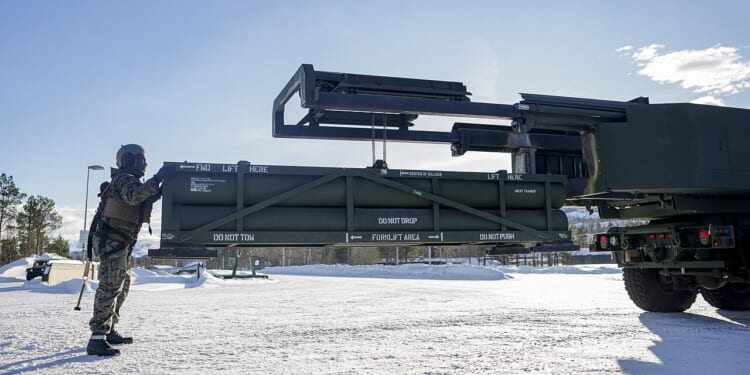Canada’s purchase of missiles from the United States comes at least in part because it fears hostility from the United States.
At a time when US-Canadian relations are at a historic nadir—and the Canadian province of Alberta threatens to leave Canada altogether, and possibly join the United States—the Trump administration has approved a potential $1.75 billion foreign military sale of 26 M142 High Mobility Artillery Rocket Systems (HIMARS) to Canada, along with related munitions, like Guided Multiple Launch Rocket System (GMLRS) rockets and Army Tactical Missile System (ATACMS) pods.
The sale was requested by the Canadian government to modernize its aging artillery capabilities. If finalized, the HIMARS deal would involve Lockheed Martin as the primary contractor and could enhance Canada’s long-range precision strike options within the defensive framework of the NATO alliance.
Canada Needs Better Missiles in the High North
Canada is buying these systems to bolster its army’s otherwise dismal firepower, particularly for high-mobility, long-range operations, amid broader efforts to align with NATO allies in response to global security challenges.
Ottawa’s acquisition of American-made HIMARS would allow for it to be in better compliance with the standards and expectations of collective defense that comes with NATO membership, after long having neglected these standards. The prospective sale also comes at a time when both the United States and Canada are threatened as never before by Russia (and, to a lesser degree, China) in the Arctic.
For more than a decade, Russia has obsessively positioned itself as the dominant player in the Arctic. While the Americans wasted time and effort in the Middle East, and the Europeans and Canadians focused on growth at the expense of military readiness, Russia steadfastly conquered as much of the Arctic’s untapped natural resource wealth and much of its strategic territory without so much as a complaint from NATO.
Today, that is changing. Under pressure from the Trump administration over trade and Canada’s previously insufficient support for NATO, Ottawa is moving fast to prove that it can be a real partner to the United States. Acquiring the HIMARS, a mobile artillery system, would allow for Canadian forces to rapidly deploy these systems to the Arctic to assert sovereignty and deter Russian elements in very challenging terrain
HIMARS Would Mark a Radical Change for Canada’s Military
If the $1.75 billion-dollar Foreign Military Sale (FMS) is finalized, it will mark the first time that the Canadian Armed Forces operated such a long-range, mobile multiple rocket launcher platform. The approval process requires US Congressional approval and a final agreement from the Canadian government.
The procurement of this expensive and complex system, while being part of Canada’s much-needed military modernization, might be part of Ottawa’s attempt to quietly patch up some of the strained relations between itself and Washington, DC, ever since the Trump administration initiated an onerous trade war against Canada. Ironically, the renewed interest in modernizing Canada’s ailing military is itself a response to the breakdown in relations between Canada and the United States as a result of the trade war that Trump initiated against Canada, as well as Trump’s constant threats to absorb Canada as the 51st state.
HIMARS is a truck-mounted, highly mobile rocket artillery platform capable of launching a variety of precision-guided munitions, including up to six GMLRS rockets (each with a range of more than 43 miles) or one ATACMS missile (with a range up to 186 miles). The truck’s mobility allows for rapid fire-and-maneuver tactics to avoid counter-battery fire. It is also air-transportable by C-130 aircraft, and integrates advanced GPS/INS guidance for accurate strikes. Canada’s purchase of the system, and its deployment to the High North in light of increased Russian threats, would be key for deterring further aggression in America’s backyard.
About the Author: Brandon J. Weichert
Brandon J. Weichert is a senior national security editor at The National Interest. Recently, Weichert became the host of The National Security Hour on America Outloud News and iHeartRadio, where he discusses national security policy every Wednesday at 8pm Eastern. He is also a contributor at Popular Mechanics and has consulted regularly with various government institutions and private organizations on geopolitical issues. Weichert’s writings have appeared in multiple publications, including The Washington Times, National Review, The American Spectator, MSN, The Asia Times, and others. His books include Winning Space: How America Remains a Superpower, Biohacked: China’s Race to Control Life, and The Shadow War: Iran’s Quest for Supremacy. His newest book, A Disaster of Our Own Making: How the West Lost Ukraine is available for purchase wherever books are sold. He can be followed via Twitter @WeTheBrandon.
Image: Wikimedia Commons.

















